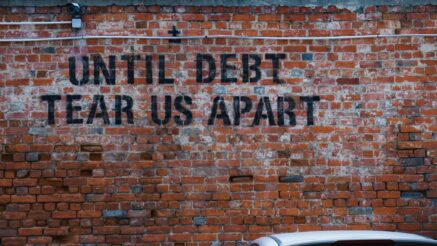The Biden Administration announced on May 1st, 2024, the findings of their investigation into the Art Institutes around the country. Their conclusion was that the Art Institutes, and its parent company, Education Management Corporation (EDMC), had been scamming prospective students to enroll using extreme exaggeration and outright lies regarding postgraduation employment rates, salaries, and career services.
In the announcement, it was said that student loan borrower’s that were enrolled in any of the Art Institutes between January 1, 2004, and October 16, 2017, and still had open federal loan balances would get automatic relief, meaning you wouldn’t have to do anything to apply for it. Many people got the golden email sent from “U.S. Department of Education <[email protected]>” with “Notice of Borrower Defense Discharge Approval” as the subject line, but some of us didn’t. Why?
If you paid off your student loans, you became ineligible for relief. Not only would your classmates that were still working on paying them off got them forgiveness, but everything they paid into that loan would be reimbursed. But not you. That’s the difference between student loan “forgiveness” and “cancellation”. A forgiven loan just means they keep what you paid and you can stop paying now. A cancelled loan means it’s being erased as if it was never taken out, so you get the money back that you had already paid into it and it’s impact on your credit score is removed.
If you got convinced to consolidate your federal loans into private loans, then you also might be ineligible. So far, only Navient is the only loan servicer that is running their own forgiveness program that includes privately held loans. Of course, this doesn’t include those of us that were serviced by Navient but got sold off to other places like Aidvantage or MOHELA. It’s only available to borrower’s with loans currently open with Navient. But, it’s worth keeping an eye out to see if other loan servicers will follow suit.
Next Steps
So if you find out that you’re not getting any kind of student loan relief despite having been enrolled at the Art Institutes during their scamming days and you’re just as pissed as I am, let’s fix this.
The part that made us ineligible was a qualification for Borrow Defense, specifically:
To be eligible to apply, you must have one or more outstanding federal student loans. The outstanding loan(s) must be associated with the school that is the subject of your borrower defense application.
My end goal is to change that requirement so that may someday read like this:
To be eligible to apply, you must have had one or more federal student loans. The loan(s) must have been associated with the school that is the subject of your borrower defense application.
Of course, targeting paid-off loans that were still federally held vs federal loans that were refinanced into private ones are two separate issues so they may need to be handled separately. Either way, the paperwork trail into identifying those private loans should exist, but it likely wouldn’t be easy or automated the way federal loans are.
I’m thinking of these actionable items in escalating order:
Step 1: we ask our congressperson to propose the change
In a perfect world, we’d simply ask our House Representative (specifically the House representative of your district, the Senate doesn’t deal in this sort of thing) to propose this change in legislation and they’d do it and everyone agrees happily and it gets passed and yay! Done! These people are voted into office to represent you after all. If you find that your representative is choosing not to aid you, then please vote for someone who will in your next election (side note, Democratic frontrunners Kamala Harris and Tim Walz support this type of legislation, so please vote for them in November 2024 if you want to have a chance at actually getting student loan forgiveness).
If there is total inaction on this part, then we should escalate to the next step.
Step 2: start a petition
It’s basically the same as above but stronger because instead of everyone privately and independently supporting an idea and hoping their representative will act, we’re all publicly united in supporting it. We get something formally written and collect signatures. This is harder for our government to ignore.
Again, if there’s total inaction on this part, then we should escalate to the next step.
Step 3: class action lawsuit
We riot! Kidding. I’m not a lawyer and have never been part of a lawsuit before so I don’t know how dumb or feasible this idea is, or even if this is the next step (unsurprisingly, no lawyers contacted me or even responded to all my inquiries for a free consultation), but I think if this were to come about, we’d be targeting the Department of Education to change that eligibility requirement.
If you want to get involved with steps 2 and 3 if/when they happen, feel free to comment below. If you don’t want to share it publicly, you’re welcome to email me at Tessa@Just1Voice.com. I’m happy to read feedback on this plan and/or your story on how you got scammed by the Art Institute and now also getting screwed over by the system.
Sources / Resources
“Find Your Members” Library of Congress.
, “Statement from President Joe Biden on $6.1 Billion in Student Debt Cancellation for 317,000 Borrowers who Attended the Art Institutes” (May 1, 2024) The White House.
, “Biden-Harris Administration Approves $6.1 Billion Group Student Loan Discharge for 317,000 Borrowers Who Attended The Art Institutes” (May 1, 2024) U.S. Department of Education.
“Borrower Defense Loan Discharge” Federal Student Aid, An Office of the U.S. Department of Education.
“Navient Student Loan Forgiveness: What Borrowers Need to Know” (May 31, 2024) NerdWallet.





